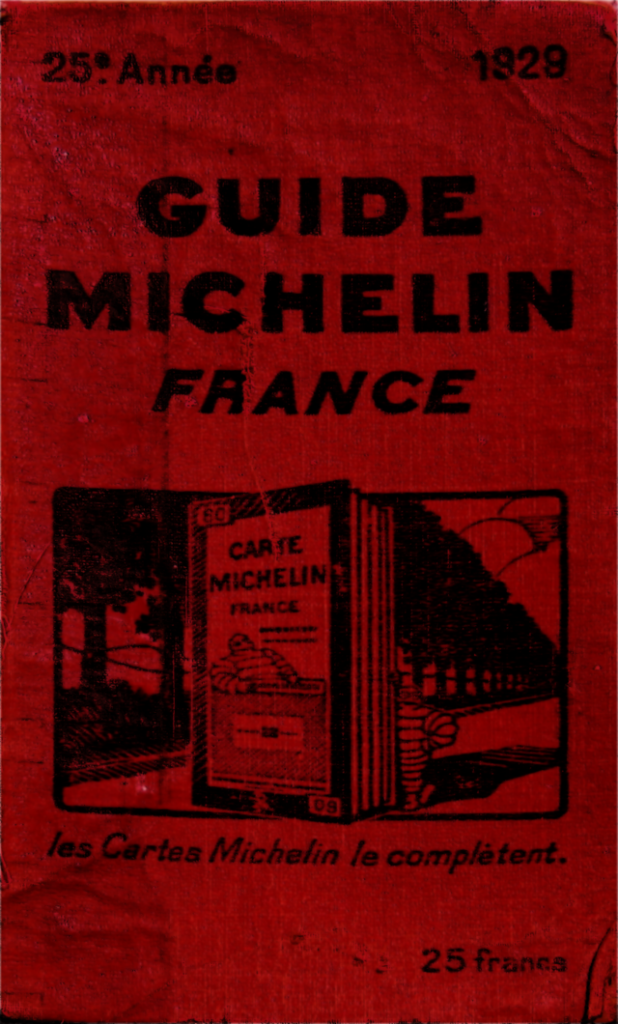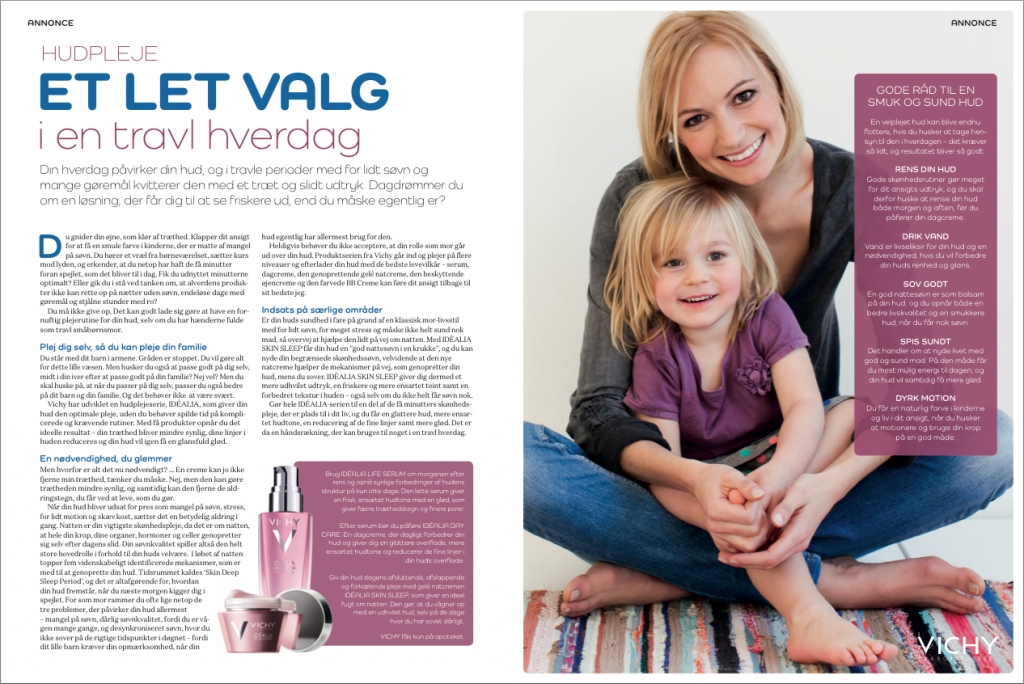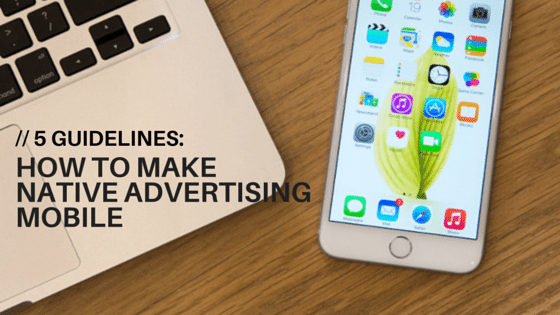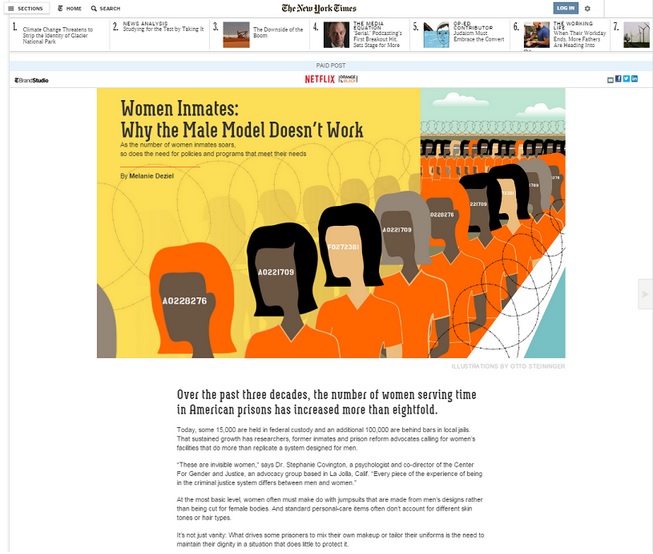Are you feeling lost in the world of native advertising or did you simply stumble upon one specific term related to native ads that just didn't make sense? We've got your back!
In this A-Z glossary, we'll guide you through the most commonly used terms in native advertising. Whether you're a seasoned marketer or a newcomer to the field, this comprehensive native advertising glossary will help you navigate the jargon and gain a deeper understanding of native advertising.
A: Advertorials
The short explanation; an advertorial in a printed media is an advertisement disguised as an editorial article – therefore the blend of the words ‘advertisement’ and ‘editorial’ – where the content matches the rest of the media. It is coverage bought by a brand, and it looks like the rest of the magazine or online media both in form and content.
It is an ad that walks, talks and acts like an editorial article. When your advertorial looks like the rest of the media, you are able to use the connection that the media already has with its readers and benefit from the media's credibility.
A: Audience Targeting:
The process of identifying and reaching specific demographics or segments of consumers with tailored advertising messages.
B: Branded content
Native advertising goes by many names and many often call it branded or sponsored content. But don't let that fool you. It is still native advertising, since native advertising is sponsored and/or branded content in its very form. It is content paid for by brands and labelled as an advertisement.
C: Call to action
A call to action (CTA) is an instruction to the audience to provoke an immediate response, usually using an imperative verb such as "call now", "find out more" or "visit a store today". And even though the mission of native advertising is not always to pursue a direct sale in the same way as banner ads strive for the sale, you often see call to actions incorporated in native advertising campaigns.
A CTA can be a simple non-demanding request like "choose a color" or "watch this video", or a much more demanding request. An obvious CTA would be requesting the audience to purchase a product or provide personal details and contact information.
C: Click-Through Rate (CTR)
In native advertising, the Click-Through Rate, or CTR, refers to a metric that measures the percentage of users who click on an ad or link compared to the total number of users who view it.
D: Definition
The exact definition of native advertising is heavily debated. Here at the Native Advertising Institute, we work with the following definition of native advertising:
"Native advertising is paid advertising where the ad matches the form, feel and function of the content of the media on which it appears."
Because native is still quite a newborn in the marketing industry, the definition is still under process. Right now, there is a lot of discussion about whether advertorials are native advertising or not.
Just like there is a difference whether people are putting the whole programmatic part of the business in the same box as native advertising. We feel pretty sure that the definition will be adjusted a couple of times in the time to come.
D: Disclosure
The requirement for advertisers to clearly indicate when content is sponsored or paid for, ensuring transparency with audiences.
E: Effectiveness
Since the dawn of native advertising, one recurrent theme of criticism and uncertainty has been the apparent inability to measure the effectiveness of sponsored content.
We have written about it before: The native conundrum: How to measure effect and we are hardly alone in identifying measurement as something of an Achilles heel for native advertising. According to a survey made by the Association of National Advertisers, a representative body for the marketing community in the United States, marketers use all kinds of different metrics to gauge the effect of their native advertising efforts.
Metrics such as ‘Click-throughs’, ‘Social media sharing’, ‘Time spent’, ‘Audience reach and frequency’, ‘Data capture’ and ‘Downloads’, ‘Lead generation’, ‘Customer acquisition’, ‘Sales’ and ‘Registration’. And so on and so on.
Perhaps the real problem is not that the effectiveness of native advertising can’t be measured, but rather the plethora of available metrics that make it difficult to identify which are the most important. There is a lack of standardization in terms of how to measure the impact of native advertising.
We believe that the status on how to measure native advertising is: If you know what you want to achieve with your campaign, the measurements are right there and up for grabs. If you don’t know, however, you are going to get lost in metrics.
F: Facebook and all the other social media
By now, almost each and every social media has made their platform available for native advertising. We’re talking Facebook, Twitter, Instagram, LinkedIn, and TikTok. Conceptually, it’s pretty simple: You, the brand, pay the social media service for the right to sponsor a post or update thus obtaining much greater reach than you would normally have access to.
Without sponsorship, there is no way of knowing if your followers are going to see your posts. With sponsorship, posts are guaranteed to be visible to your audience. That’s what you pay for.
E: Engagement
The level of interaction and involvement from users with native advertising content, often measured through likes, shares, and comments.
F: Format
The structure and layout of native ads, which can include articles, videos, infographics, and more.
G: Guidelines
As mentioned above, native advertising is still a new marketing format. Therefore, the marketers working with native have been lacking some guidelines. By now, more and more well-written and thoroughly developed guidelines have seen the light of day, so there are plenty of wise words to dive into if you want to know more about how to work with native advertising.
For instance, IAB and its Native Advertising Task Force have released the Native Advertising Playbook, and the American Society of Magazine Editors (ASME) has released Guidelines for Editors and Publishers.
H: Headline
The title or headline of native ads, designed to capture the audience's attention and entice them to engage with the content.
READ MORE: How to write native ad headlines that boost performance
H: Honesty
Because native advertising's very goal is to look just like editorial content, the users easily get confused. They simply cannot figure out what is editorial content and what is advertising.
This is a problem because it hurts the trust of the users and you therefore risk that they don't feel good about you as a brand. It can also hurt the credibility of the news brand publishing the campaign.
I: Impressions
The number of times a native ad is displayed or viewed by users, regardless of whether they interact with it.
I: iOS9 and its Ad Blocker
Apple's new operating system, iOS9 and its brand new ad block features is here before we know it. And it has been the topic on many native advertising blogs. Including our own here at the Native Advertising Institute.
To consumers, ad blocking is a nice little function that keeps any commercial disturbance from interrupting their online experience. To publishers, however, ad blocking is a potential menace that could wipe out one of the most important aspects of their business model.
There is definitely reason to believe that an increment of ad blocking will lead to an increment of native advertising. Publishers will be desperate to find types of advertising that can evade ad blockers and sponsored content that is truly native, blends in with editorial products and should be difficult to identify for ad blockers. Furthermore, most publishers have some experience with sponsored content.
As banner ads lose their profitability, publishers should have the know-how to make native advertising work on some level. However, it might not be that simple. There seems to be some confusion regarding sponsored content’s actual ability to evade ad blockers.
But one thing is for sure, the destinies of native advertising and ad blockers are entangled. We will continue to pay close attention as this one plays out.
J: Journalism
Journalists are very scared of native advertising! Okay now, we are generalizing and maybe even exaggerating a little, but there is a lively debate on native advertising in the media.
Because native advertising LOOKS like editorial content a lot of media and journalists fear that the marketing format will damage the credibility of the media. They fear that the readers can't differentiate and therefore feel cheated when they find out that an article that they first read as an editorial piece actually was an advertisement. The keyword here is transparency. More about this under T...
K: Key Performance Indicators (KPIs)
Metrics used to evaluate the effectiveness and success of native advertising campaigns, such as CTR, conversion rate, and engagement rate.
K: Knowledge
Together with the Native Advertising Institute, Twitter is the place to be if you want scalding updates on the world of today. Therefore, we have put together a list of ten very interesting individuals that you need to follow on Twitter if you want the hottest and most important chit-chat knowledge on #nativeadvertising. Some of them are:
Leanne Brinkies, Head of native advertising at King Content: @LBrinkies
Mrs. Native is what could almost call Leanne Brinkies. She is Head of Native at King Content, which is a content marketing agency founded in Australia and she knows everything that is going on in native advertising.
Stephanie Losee, Head of brand content at Politico:@slosee
We were already following Stephanie Losee on Twitter when she was working at Dell as their Global Content Editor, and we are no less interested now that she is Head of Brand Content at Politico, where she is in charge of Politico Focus, an in-house department that will create native advertising for brands.
James Morris, Global Head of MediaCom Beyond Advertising: @JSMWBA
James Morris looks after MediaCom Beyond Advertising, which is the specialist content marketing division now spanning 43 MediaCom offices worldwide, including more than 700 dedicated content specialists. Following him gives you both native advertising updates as well as advertising in general. And then he’s apparently also a huge West Bromich fan. We think it is best not to comment on that …
You can read the rest of the list by clicking right here.
L: Labelling
As mentioned above, you need to be honest when you do native advertising. So the readers and users do not feel mislead. The way to do this is to be very clear in your labeling of your native content. It should very clearly say 'Sponsored Post' or 'Advertising' or which ever word you want to use. In that way there is no doubt in the readers mind that they are now reading something that is not editorial content.
READ MORE: How to Spot Native Ads
L: Landing Page
The webpage that users are directed to after clicking on a native ad, often optimized for conversions and designed to fulfill the campaign's objectives.
M: Mobile Optimization
At this point in time, it’s hardly breaking news to anyone that mobile devices are the main platform for consuming online content. Almost a year ago Millennial Media and comScore published a report that identified how smartphones (44 pct.) and tablets (12 pct.) were responsible for 56 pct. of consumed online content. In 2013, 40 pct. of online content was reached from mobile devices.
The trend is clear and it’s moving at a staggering pace: mobile devices are becoming our primary gateway to the internet.
So how does this affect native advertising? If the vast majority of your audience is going to access content from a mobile device, you might as well tailor your online content for smartphones and tablets.
N: Netflix
The streaming company, Netflix, is one to watch when it comes to native ads. Native ads are becoming the cornerstones of the streaming service’s marketing campaign for their original series. And Netflix doesn’t create small ads. They go big and they go flashy.
Netflix’s first foray into the realm of native advertising was taken in May of 2014 when an ad – TV Got Better – appeared on Wired.com and covered the future of TV. The ad has since been compared to The New York Times’ editorial feature ‘Snow Fall’.
The second native ad – Women Inmates – that Netflix bought ran on The New York Times website in June of 2014 and looked at women’s prisons. The ad was of course a way of promoting the Netflix original series ‘Orange is the New Black’ and it consisted of video, charts and audio to supplement text about female incarceration in the U.S.
In March 2015, Netflix paid The Atlantic and their in-house creative marketing group, Re:think, an undisclosed sum to create a lengthy, reported article with interactive charts and a video exploring the dynamic between certain U.S. presidents and their wives. The ad included the fictitious couple in the Netflix original series ‘House of Cards’.
The article, called ‘The Ascent’, is a native ad and it promotes the third season of ‘House of Cards’.
So if you want to see some well-produced and thought through native ads, take a look at these.
O: Organic Reach
The number of users who see native advertising content without paid promotion or advertising, often through social sharing or organic discovery.
O: Outbrain and other recommendation platforms
Another form of native advertising is brought to you by the so called recommendation widgets or platforms. It is the placements at the bottom of the articles you are reading where they tip you about three other articles that you might find interesting. This form of native is both loved and hated as Leanne Brinkies from King Content stated recently in another blog post.
Loved because of the possibilities of revenue and hated because they have a tendency not to reach your target audience.
Taboola and Outbrain are the two biggest content recommendation companies in the world, and they make up two of the most visible native advertising players on the web. Media companies and marketers pay Outbrain and Taboola to get their links posted on the publishers’ sites in an effort to drive traffic to their content.
The content discovery company shares revenue with the publishers where the links appear.
Content discovery or content recommendation is big business in native advertising. In November 2014, Time Inc. struck a deal with Outbrain worth more than 100 million dollars to the magazine publisher. The partnership establishes Outbrain as the exclusive external provider for recommended links for Time Inc. websites such as Time.com and People.com.
READ MORE: The Types & Formats of Native Advertising
P: Personas
We spoke a bit about 'your target audience' just before. Another way of saying 'target audience' is using the term 'personas'. Personas are very important for your native advertising campaigns, because they help you create the right content for the right people.
A persona is a fictional character created to make an actual and realistic representation of a user type that might use your website, brand, product or services. Personas serve the purpose of helping brands develop a greater understanding of customers and their needs. More than anything, if you work thoroughly with personas they provide constant guidance on how to design content with the needs of your customers in mind.
P: Publishers
The creators and distributors of content who partner with advertisers to host native advertising campaigns on their platforms.
Q: Quiz tiiiiiime ...
Okay, now it's time for a little quiz. A native quiz of course. I will ask you a quick question and you have 30 seconds to come up with the answer. Don't ask Google!
Here goes:
A couple of years ago, a media brand got a lot of unintended attention for a sponsored web post by the Church of Scientology – which media brand was it?
Tic tock tic tock ... 30 seconds later:
And the answer is:
The Atlantic!
Did you get it right? Cool. Maybe you don't even need this A-Z then...;-)
R: Revenue
Why has native advertising become so popular during the last year or two? One word: Revenue. Almost all reports that we have seen about native advertising are showing that brands, advertisers and agencies working with native advertising are experiencing a growth in revenue from this discipline.
S: Scalability
The issue of scalability is at the core of native advertising. Do you believe that the same piece of content can be a good fit for several different media outlets? Or do you subscribe to the traditionalist view that native advertising is a monogamistic endeavor where pieces of content only fit one publisher? That is the scalability issue in a nutshell.
T: True or false?
Native advertising, hotly debated as it is, finds itself surrounded by healthy doses of myth-making. So what is true and what is false? We tried to clarify five of the most pressing myths in this post. One of them:
Myth: Native advertising is an entirely new concept
Truth: Definitely not
In 1900, tire manufacturer Michelin published the Michelin Guide, their 400 page manifest to help motorists with maps, hotel names, restaurants and other kinds of useful information for the road.
The content itself had almost no mention of tires – the brand’s actual product – but the Michelin Guide became wildly successful. Michelin knew that improving the driving experience would help increase car sales and directly improve the demand for tires. This was essentially native advertising in one of its earliest forms.

A truly old school piece of native advertising. But native advertising none the less. The Michelin Guide did wonders for Michelin's brand awareness without having much to do with tires.
U: User Experience (UX)
The overall experience and satisfaction of users when interacting with native advertising content, emphasizing usability, accessibility, and enjoyment.
V: Videos
Above, we showed you a great and very successful example of a native video, which is a format that you might as well get used to. This year's Acumen Report found that the forever elusive millennials, and the even younger Gen Zers, watch an average of 11.3 hours of free online video a week. Obviously, this makes online video one of the important platforms, if not the most important platform, when native advertisers want to reach their audiences in the near future.
The New York Times has already announced 'Mobile Moments', a platform for native advertising videos, and more publishers are expected to follow.
X: X-factor
We were THIS CLOSE to writing about British rock band Coldplay's third studio album X&Y, but then we remembered the average, borderline uninspired, pop rock which did nothing to resemble the majestic highs of A Rush of Blood to the Head, their preceding album, and how the record, including Chris Martin's increasingly predictable lyrics, probably signaled the beginning of the end to the creative peak of one of Britain's most beloved rock bands in the post-Britpop era.
Also, it didn't really have anything to do with native advertising.
So instead we bring you something that we call the X-factor of native advertising. The X-factor is that people, despite the fact that it's advertising, actually want to engage with native advertising.
That is pretty special in an age of ad block and general ad hostility. We're not saying that all native advertising is good enough to achieve broad acceptance, but some is and can you say that about any other type of advertising?
Look no further than 'Women Inmates', by courtesy of The New York Times and Netflix. This piece of advertising(ADVERTISING!) was among the top 1,47 percent most popular articles on nytimes.com during a 341-day stretch in which more than 65,000 stories were published(as reported by The Native Advertising Institute right here). That's some X-factor right there, people!
Y: Yield Optimization
Strategies and techniques used by publishers to maximize the revenue generated from native advertising placements on their platforms.
Y: Youtility
We still haven't seen a book just about native advertising, but if you want to read a great book about creating great content try Jay Baer's Youtility. The description reads:
"The difference between helping and selling is just two letters, but those two letters make all the difference. What if – faced with more competition than ever before – you stopped trying to be amazing, and just started being useful?"
And this is what great native is all about. Creating content that is useful for your audience and is not just about selling.
Z: Zero Disruption
The goal of native advertising to deliver branded content in a way that enhances, rather than interrupts, the user experience, resulting in increased engagement and effectiveness.
Z: Zzzzz ...
It is a tough job creating a complete native advertising encyclopedia. So now, we are all tired here at the Native Advertising Institute. But just give us a moment and we will, of course, be right back with the latest and greatest native advertising knowledge.
Stay tuned.









